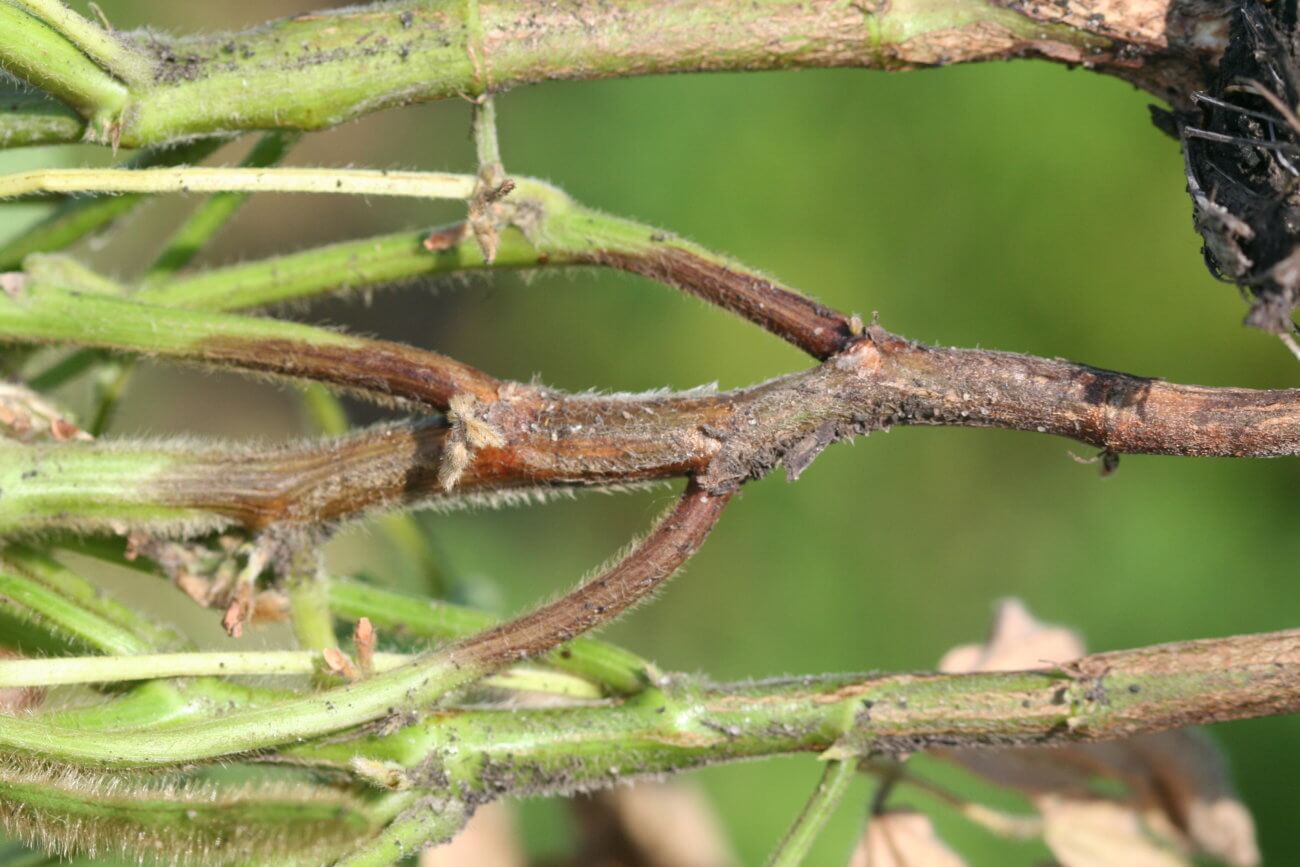Phytophthora Root Rot (PRR) of soybean, caused by the pathogen, fungi-like, oomycete, Phytophthora sojae, and is a destructive disease with a significant impact on soybean crops. The disease can strike at various growth stages, from seedling to mature plant, and its presence in a field can lead to substantial yield losses. Here's a detailed look at the disease and how it can be effectively managed and documented in the field.
Impact on Soybeans:
- Seedling Stage: Infected seeds may rot before germination, leading to poor stands. Infected seedlings may also die shortly before or after emergence.
- Mature Plants: In later stages, symptoms include wilting, stem rot, and discoloration at the base of the stem. The disease can lead to significant yield losses, especially in fields with a history of PRR and under favorable conditions for the disease (poorly draining soils, high soil moisture).
Documentation and Scouting in the Field:
Proper field scouting and documentation are critical in managing PRR. Here's how you can spot and count instances of the disease:
How to Spot:
- Look for wilting plants with leaves that remain attached to the stem.
- Check the base of the stem for a brown or purple discoloration.
- In wet conditions, look for white fungal growth near the soil line.
- Split open the lower stem and taproot to check for a brownish discoloration of the vascular tissue.
How to Count:
- Mark off a specific area or a certain number of rows for consistent monitoring.
- Count the number of plants showing symptoms of PRR.
- Document the severity of the disease on a scale (e.g., mild, moderate, severe), if applicable.
- Note any patterns or clusters of infected plants, as this can help identify the source or spread pattern.
Utilizing Modern Tools for Efficient Management:
Incorporating modern agricultural apps like Inspagro can significantly enhance the efficiency and accuracy of field scouting for diseases like PRR. Here's how such apps can be beneficial:
- Offline Field-Scouting: Apps like Inspagro allow for offline data collection in the field, ensuring that no information is lost due to connectivity issues.
- Data Sharing: Information collected can be easily shared among farm members and third parties, fostering a collaborative approach to disease management.
- Cost-Saving: By precisely documenting disease presence and severity, farmers can optimize the use of inputs, potentially leading to cost savings.
- Attracting Younger Workforce: The integration of technology in farming practices can make the field more appealing to the younger generation, who are generally more inclined to work with modern apps and tools.
In managing diseases like Phytophthora Root Rot, the key is early detection, accurate documentation, and prompt action. By combining traditional scouting practices with modern technological tools, farmers can effectively mitigate the impact of this disease, ensuring the health and productivity of their soybean crops.
FAQs:
What is Phytophthora Root Rot and how does it affect soybeans? Phytophthora Root Rot (PRR) is a destructive fungal disease caused by Phytophthora sojae. It affects soybeans at various growth stages, leading to symptoms like seedling rot, wilting, stem discoloration, and in severe cases, plant death, resulting in substantial yield losses.
How can I identify Phytophthora Root Rot in my soybean fields? Look for wilting plants with leaves that remain attached, brown or purple discoloration at the base of the stem, white fungal growth near the soil line in wet conditions, and brownish discoloration in the vascular tissue when you split open the lower stem and taproot.
What conditions favor the development of Phytophthora Root Rot? PRR thrives in poorly draining soils with high moisture levels. It's most prevalent in conditions that promote prolonged soil saturation, making effective drainage and soil management crucial in preventing the disease.
How can modern apps like Inspagro help in managing Phytophthora Root Rot? Inspagro and similar apps facilitate offline field-scouting, allowing precise documentation of disease presence and severity. They enable easy data sharing among farm members and third parties, optimizing input usage, and making farm operations more cost-effective and efficient.
Are there any preventive measures to protect soybean crops from Phytophthora Root Rot? Preventive measures include selecting resistant soybean varieties, improving soil drainage, using fungicide-treated seeds, and employing crop rotation. Regular field scouting and timely interventions are also critical in managing the disease effectively.




Comments
Post a Comment